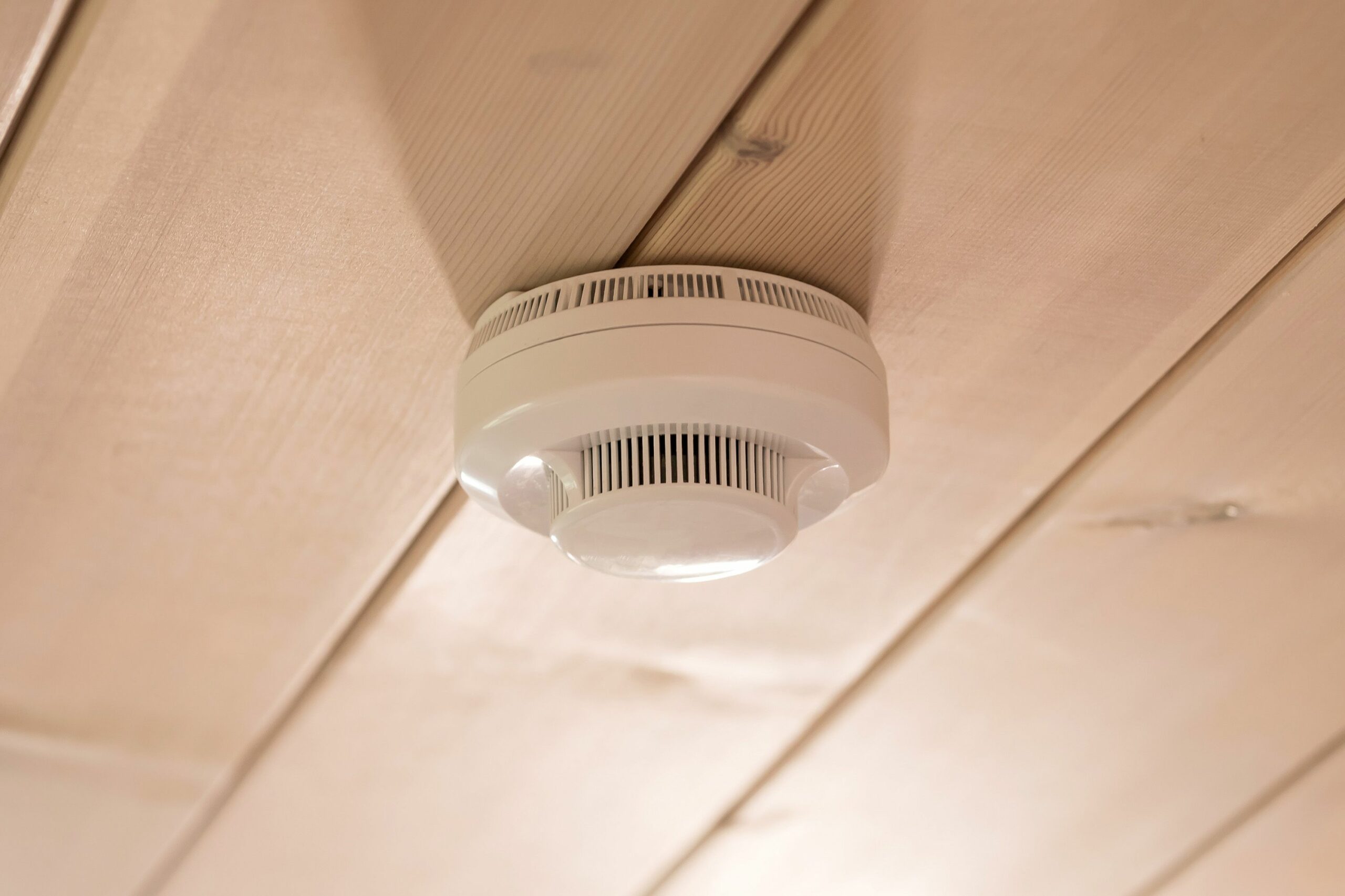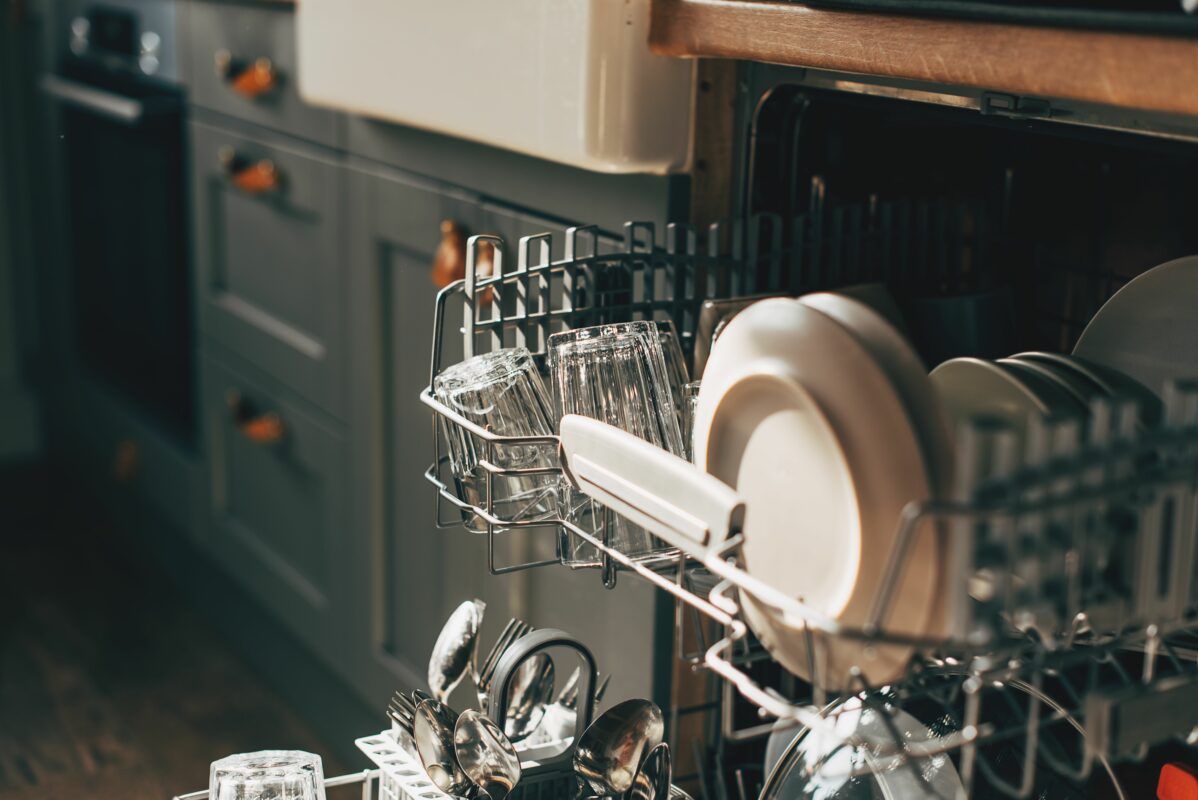Smoke detectors aren’t the only safety device that should be installed in every home. Carbon monoxide detectors are just as important for ensuring health and wellness. Most homes use at least one gas burning appliance, including the furnace, water heater, dryer, or stove. Similarly, homeowners often use gas burning tools and vehicles, like lawn mowers, cars, and trucks.
However, the toxic gas known as carbon monoxide (CO) is found in the fumes produced by these devices. Since carbon monoxide is an invisible, odorless gas, you’ll need a carbon monoxide detector to alert you to its presence. These devices are a specialized device designed specifically to detect the gas and sound an alarm to notify anyone in the home.
Whether you’re installing one for the first time or simply testing yours (which should be done regularly), make sure yours is placed in the right spot. Check out this guide to learn how many carbon monoxide detectors a home should have, and the best place to put it in your home.
What Is Carbon Monoxide?
Exposure to carbon monoxide can cause headaches, fatigue, disorientation, and nausea, but since these symptoms are easily mistaken for flu-like conditions, some people may not even be aware there is anything wrong until it’s too late.
“I frequently see the dangers of CO gas firsthand. Last year, I responded to a call from a young family who had been experiencing nausea and dizziness,” says Allen Chenault, HVAC Expert and Owner of AC’s Heating & Air. “Upon inspection, their furnace was emitting dangerous levels of carbon monoxide. By installing high-quality CO detectors, I was able to diagnose and fix the issue, avoiding potential disaster.”
Carbon monoxide is produced by gas burning appliances, tools, vehicles, and other devices, like the fireplace, grill, or gas range. It’s a colorless, odorless, and tasteless gas that blends with the air instead of sinking to the ground or rising to the roof. Most carbon monoxide toxicity victims breathe in excessive levels of this invisible gas without even knowing, which is why homes should have carbon monoxide detectors installed.
The Best Spot to Place a Carbon Monoxide Detector
Purchasing carbon monoxide detectors is only half the job. You also need to determine where they will be installed throughout the home to ensure the detectors will protect you and anyone else living in the home.
Dr. Maria Knobel, medical director of Medical Cert, says you should have at least one carbon monoxide detector on every level of your home. “This includes basements and attics, since carbon monoxide can spread evenly throughout the air,” she says. “Carbon monoxide doesn’t rise or sink like other gases, which means it can easily accumulate in any part of the house. Having a detector on each level ensures that no matter where the gas builds up, it will be detected in time to prevent harm.”
Carbon monoxide detectors should be installed between knee to head height on every level of the home, especially those floors with fuel burning appliances and outside of sleeping areas. We also recommend installing additional carbon monoxide detectors about five to 20 feet from any sources of CO gas, like the furnace, water heater, or fireplace. Similarly, it’s a good idea to have a carbon monoxide detector near an attached garage in case fumes seep into the home.
How Many Carbon Monoxide Detectors Do You Need?
Typically, you should have at least one carbon monoxide detector on every level of the home, including the basement and attic, though the size of the home and the number of gas burning appliances or devices will help to determine how many carbon monoxide detector you need.
“Carbon monoxide is particularly dangerous at night when people are sleeping because they won’t experience symptoms like dizziness or confusion, which they might notice if they were awake.
Without an alarm, they may not wake up at all. By having a detector within the hearing range of the bedrooms, you can ensure that if carbon monoxide builds up while you sleep, the alarm will wake you up before it becomes life-threatening. Ideally, place the detector just outside the bedroom doors or even in the hallway connecting multiple bedrooms,” suggests Dr. Maria Knobel, Medical Director of Medical Cert.
Additional carbon monoxide detectors may be required for larger homes or if there are multiple gas burning appliances or devices throughout the house. Make sure to install extra carbon monoxide detectors 5 to 20 feet from sources of CO gas, including the stove, dryer, or furnace, and follow the manufacturer’s guidelines for specific recommendations based on the size and layout of the home.
Where Not to Place Carbon Monoxide Detectors
After figuring out where in the home the detectors should be installed, some DIYers may try to mount them to the ceiling. However, carbon monoxide does not weight the same as smoke, so you shouldn’t be installing carbon monoxide detectors in the same location as your smoke detectors.
Knobel explains that unlike other gases, carbon monoxide has almost the same density as air, meaning it doesn’t rise to the ceiling or sink to the floor. “This is why the height of your detector is important—it should be placed around knee to head height to match where you’re breathing,” she says.
She says the best locations are on walls about 3 to 5 feet from the floor or on a shelf. “Carbon monoxide detectors don’t need to be placed on the ceiling like smoke detectors because carbon monoxide mixes evenly throughout the air,” she says. “Placing them too high or too low can delay detection, which is why head-level positioning is key for an early warning.”
There are a few other locations you should avoid when installing the carbon monoxide detectors. Check this list of where not to place carbon monoxide detectors before installing these safety devices in your home:
- Above or within five feet of potential sources of carbon monoxide, like the fireplace, range, or furnace.
- In humid areas, like the bathroom, kitchen, or laundry room.
- Close to sources of fresh air, like windows or exterior doors.
- In areas with dead air or poor air flow, like inside a closet or pantry.
- Anywhere that gets direct sunlight.
Carbon Monoxide Detector Maintenance Tips
Safety shouldn’t be left to chance, which is why carbon monoxide detectors, like smoke detectors, should be tested, cleaned, and maintained regularly to ensure they are in working order in the case of an emergency.
Chenault notes that newer CO detectors use advanced electrochemical sensors to detect even low levels of the gas. “As technology improves, the risks associated with CO exposure are reduced. However, CO detectors still require periodic maintenance to ensure proper functionality,” he says. “I recommend homeowners test and replace their CO detectors every 3-5 years based on the manufacturer’s recommendations.”
Homeowners should test the carbon monoxide detector weekly and, if the detector operates off a battery, replace the battery at least once or twice a year. Additionally, it’s recommended to clean the carbon monoxide detectors with a dry dusting cloth about once every one to two weeks to keep them clear of dirt, hair, dust, and other debris.



